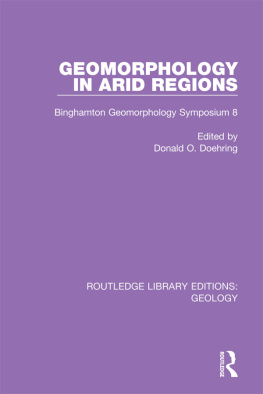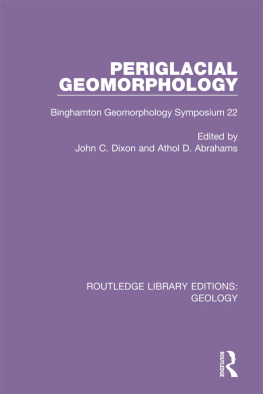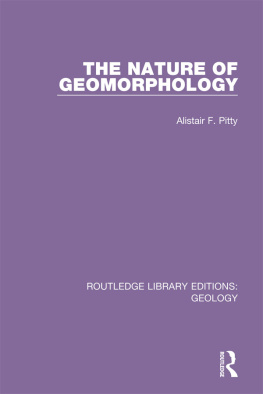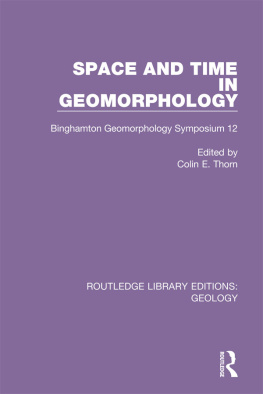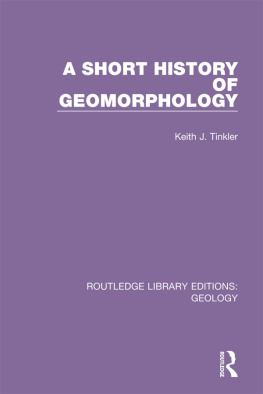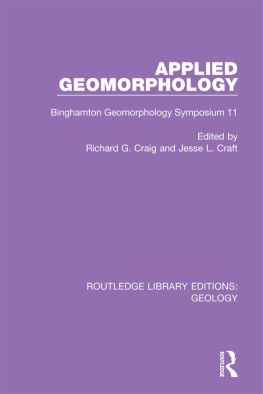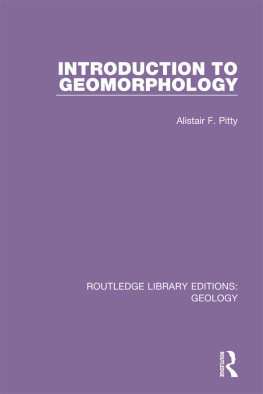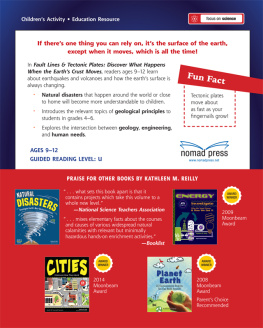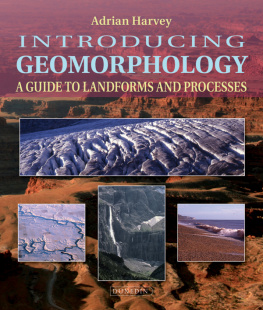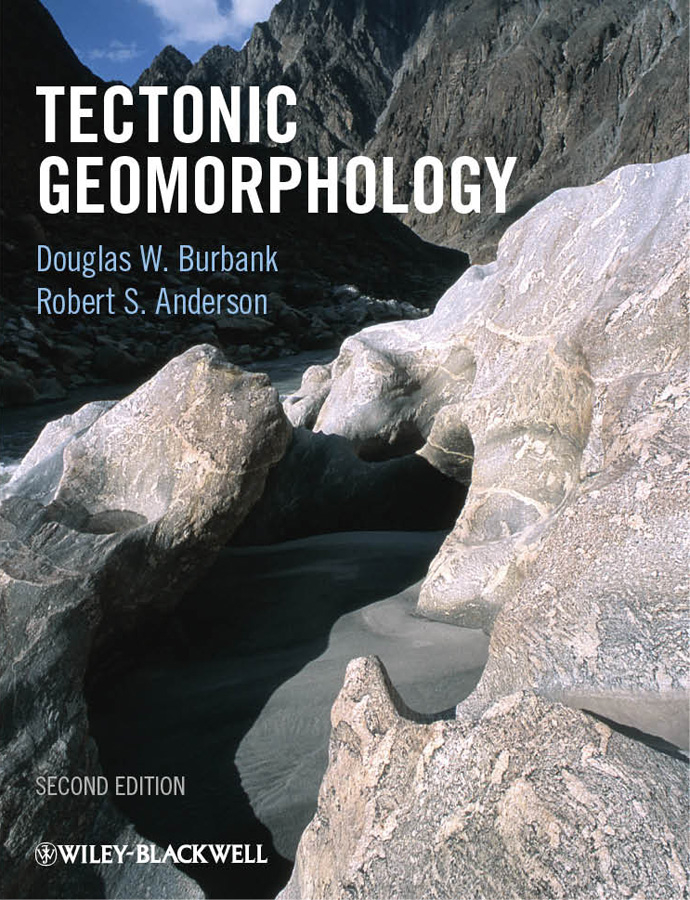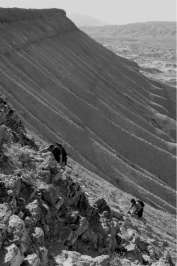COMPANION WEBSITE This book has a companion website: www.wiley.com/go/burbank/geomorphology with Figures and Tables from the book for downloading |

This edition first published 2012 2012 by Douglas W. Burbank and Robert S. Anderson
Previous edition: 2001 Douglas W. Burbank and Robert S. Anderson
Blackwell Publishing was acquired by John Wiley & Sons in February 2007. Blackwells publishing program has been merged with Wileys global Scientific, Technical and Medical business to form Wiley-Blackwell.
Registered Office
John Wiley & Sons, Ltd, The Atrium, Southern Gate, Chichester, West Sussex, PO19 8SQ, UK
Editorial Offices
9600 Garsington Road, Oxford, OX4 2DQ, UK
The Atrium, Southern Gate, Chichester, West Sussex, PO19 8SQ, UK
111 River Street, Hoboken, NJ 07030-5774, USA
For details of our global editorial offices, for customer services and for information about how to apply for permission to reuse the copyright material in this book please see our website at www.wiley.com/wiley-blackwell.
The right of the author to be identified as the author of this work has been asserted in accordance with the UK Copyright, Designs and Patents Act 1988.
All rights reserved. No part of this publication may be reproduced, stored in a retrieval system, or transmitted, in any form or by any means, electronic, mechanical, photocopying, recording or otherwise, except as permitted by the UK Copyright, Designs and Patents Act 1988, without the prior permission of the publisher.
Designations used by companies to distinguish their products are often claimed as trademarks. All brand names and product names used in this book are trade names, service marks, trademarks or registered trademarks of their respective owners. The publisher is not associated with any product or vendor mentioned in this book. This publication is designed to provide accurate and authoritative information in regard to the subject matter covered. It is sold on the understanding that the publisher is not engaged in rendering professional services. If professional advice or other expert assistance is required, the services of a competent professional should be sought.
Library of Congress Cataloging-in-Publication Data
Burbank, Douglas West.
Tectonic geomorphology / Douglas W. Burbank and Robert S. Anderson. 2nd ed.
p. cm.
Includes bibliographical references and index.
ISBN 978-1-4443-3886-7 (cloth) ISBN 978-1-4443-3887-4 (pbk.)
1. Geomorphology. 2. Geology, Structural. I. Anderson, Robert S. (Robert Stewart), 1952
II. Anderson, Robert S. III. Title.
GB401.5.B86 2012
551.41dc22
2011012030
A catalogue record for this book is available from the British Library.
This book is published in the following electronic formats: ePDF 9781444345032; Wiley Online Library 9781444345063; ePub 9781444345049; Mobi 9781444345056
DEDICATED
to
Rachel and Suzanne, Helen and Jack, Flodie and Andy.
Preface to First Edition
No one can gaze at satellite images of the earths surface without being struck by the crumpled zones of rocks that delineate regions of ongoing and past tectonic deformation. Landscapes in tectonically active areas result from a complex integration of the effects of vertical and horizontal motions of crustal rocks and erosion or deposition by surface processes. In a sense, many landscapes can be thought of as resulting from a competition among those processes acting to elevate the earths surface and those that tend to lower it. The study of this competition and the interpretation of the geodynamic and geomorphic implications of such landscapes is the focus of tectonic geomorphology.
Tectonic geomorphology is a wonderfully integrative field that presents stimulating challenges to anyone trying to extract information from deforming landscapes. Consider, for example, a typical subject for a tectonic geomorphic study: a growing fold in the hangingwall of a thrust fault. The fault cuts the surface along much of its length, but diminishes in displacement towards its tip, where no surface break is present. How is the shape of the fold related to the mechanical properties of the faulted material? How much slip occurs in an individual earthquake on that thrust fault and what is the detailed pattern of deformation? How far does the tip of the thrust propagate laterally and how much does the hangingwall grow with each rupture? Is a similar pattern of deformation repeated in successive earthquakes? What is the interval between earthquakes? Can the preserved structural form of the fold be explained as the sum of deformation during earthquakes alone, or is there significant interseismic deformation? How is the surface of the fold modified by erosion and deposition as it grows in length and height, and are there systematic changes along the fold that define a predictable evolutionary pattern of the landscape above such faults? Are the patterns and rates of erosion influenced more by tectonic or climatic forcing? What are the relative and absolute rates of rock uplift and erosion within the hangingwall and how is any imbalance reflected by the resulting landscape? In order to answer these questions, one has to draw on an understanding of paleoseismology, geodesy, structural geology, geomorphology, geochronology, paleoclimatology, stratigraphy, and rock mechanics, because each underpins some aspects of the interplay of tectonics and erosion. Key parts of the answer to each question are embedded in the landscape and are the subject of tectonic geomorphology.
Although efforts to interpret the processes that generate dynamic landscapes are not new, several key advances in the past few decades have provided a more robust foundation for rigorous analysis, and have opened up entirely new avenues of research.
- The development of new chronologic techniques permits us to inject time control into many facets of a landscape that were formerly unconstrained. The plethora of new dating approaches underpins most of the success in defining rates of processes.
- Process-oriented geomorphic studies have served to improve our understanding of the physical basis of surface processes. Insights into the key physical phenomena that control erosion and sediment transport have led to the development of both conceptual and quantitative models that can be applied in landscape analysis.
- Understanding of the record of past climate change has deepened immeasurably, such that the magnitude and rate of past climatic variability is now better calibrated than ever before. The impact of climate change on surface processes and landform development can now be better addressed in this detailed framework.
- New geodetic tools are providing an incomparable overview of rates of deformation of the earths surface. Not only can changes in distances between specific points be documented with unprecedented accuracy, but the spatial pattern of deformation following an earthquake can now be documented across vast areas.
- Paleoseismology, the study of the record of past earthquakes, has matured into a diverse discipline and has provided a basis for documenting the behavior of faults, their impact on adjacent landscapes, and the societal hazards that they pose.



